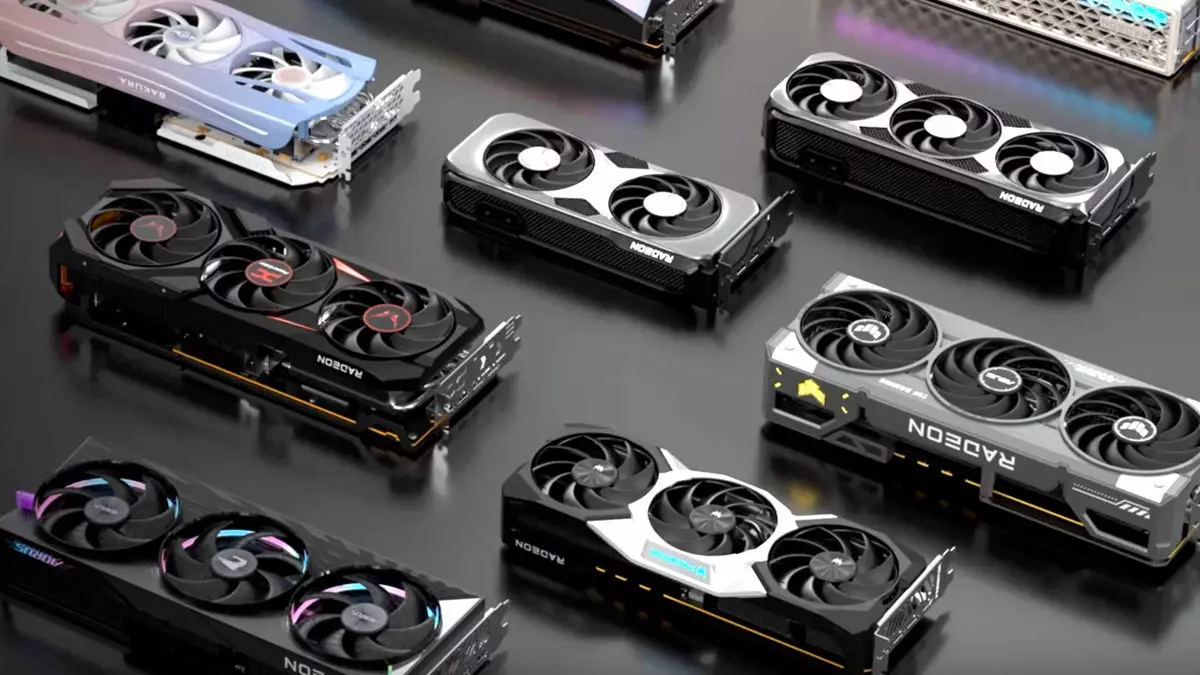The tech industry is abuzz with excitement following AMD’s staggering revelation of its 45% market share in Japan, but the real headline-grabber is reserved for the Radeon RX 9070 XT. Dr. Lisa Su, the CEO of AMD, has proclaimed this graphics card as the best-selling GPU in the company’s history, achieving first-week sales that outpaced its predecessors by an astonishing tenfold. While the excitement is palpable, a discerning eye is required to parse these bold claims.
Yes, the RX 9070 XT has indeed taken the market by storm within its debut week. However, focusing solely on first-week sales can be misleading. It raises essential questions about the product’s sustainability in the long run. Without concrete figures to quantify these claims, excitement over initial figures may overshadow the critical assessment of ongoing availability and performance.
Understanding the Long-Term Viability
In the dynamic landscape of technology and consumer electronics, trends can shift dramatically. A powerful launch does not guarantee sustained success. Dr. Su acknowledges this reality, expressing AMD’s commitment to ramping up production to ensure gamers have stable access to the RX 9070 XT. Nonetheless, the lack of specific details surrounding manufacturing processes leaves tech enthusiasts on edge. Enthusiasm may be high, but it is tempered by the uncertainty of whether supply chains can keep pace with demand.
As gamers eagerly await the opportunity to purchase the latest hardware, it is crucial for AMD to avoid the pitfalls of previous product launches that suffered due to inventory shortages. A successful launch can become irrelevant if consumers are left waiting for months to obtain the product.
AMD’s Commitment to Accessibility
Dr. Su articulates AMD’s positioning within the market by emphasizing a dedication to distributing high-performance GPUs at competitive price points. This approach is refreshing, especially when compared to competitors that often prioritize premium offerings, leaving mainstream gamers in the lurch. AMD is recognizing the broad spectrum of gaming enthusiasts, from casual users to hardcore gamers, and catering to their needs.
This inclusive strategy could indeed fortify AMD’s market position in the long run, creating a loyal consumer base that sees value in not only performance but also accessibility. However, the question remains: can they maintain this balance between cutting-edge technology and affordability as silicon manufacturing costs soar?
Navigating Technological Challenges
The complexities of modern chip manufacturing are evident to industry insiders. Dr. Su has openly discussed the escalating costs and diminishing returns associated with silicon scaling. Despite these challenges, she posits that there are still pathways for innovation. AMD’s investment in technologies like chiplet packaging and 3D stacking is promising. But while optimism exists around future advancements, the technology landscape is fraught with obstacles that must be navigated expertly.
Simply put, for AMD to maintain its surge in popularity, it must balance innovation with practical applications that support scalable production. As advances in silicon technology emerge, it will be essential for AMD to spearhead robust strategies that utilize new methodologies alongside software optimization.
The Market Landscape Ahead
The gaming industry’s future hinges on how effectively AMD can manage market expectations and real-world supply issues. As fervent demand for the RX 9070 XT continues to echo throughout the gaming community, AMD stands at a critical juncture. Can they meet the anticipated demand while optimizing production processes to avoid the missteps of the past?
With competitors fiercely vying for market share, the stakes are higher than ever. Information from data-analysis firms and market research will soon illustrate whether AMD’s production strategies will keep pace with consumer desires. Tech enthusiasts are crossing their fingers for a favorable turnaround for AMD, aware that enthusiastic initial sales must be backed by unwavering supply and ongoing support for their gaming endeavors.
AMD’s potential is immense, but it holds the future of its graphics lineup — and perhaps a substantial segment of its market share — in its own hands.

